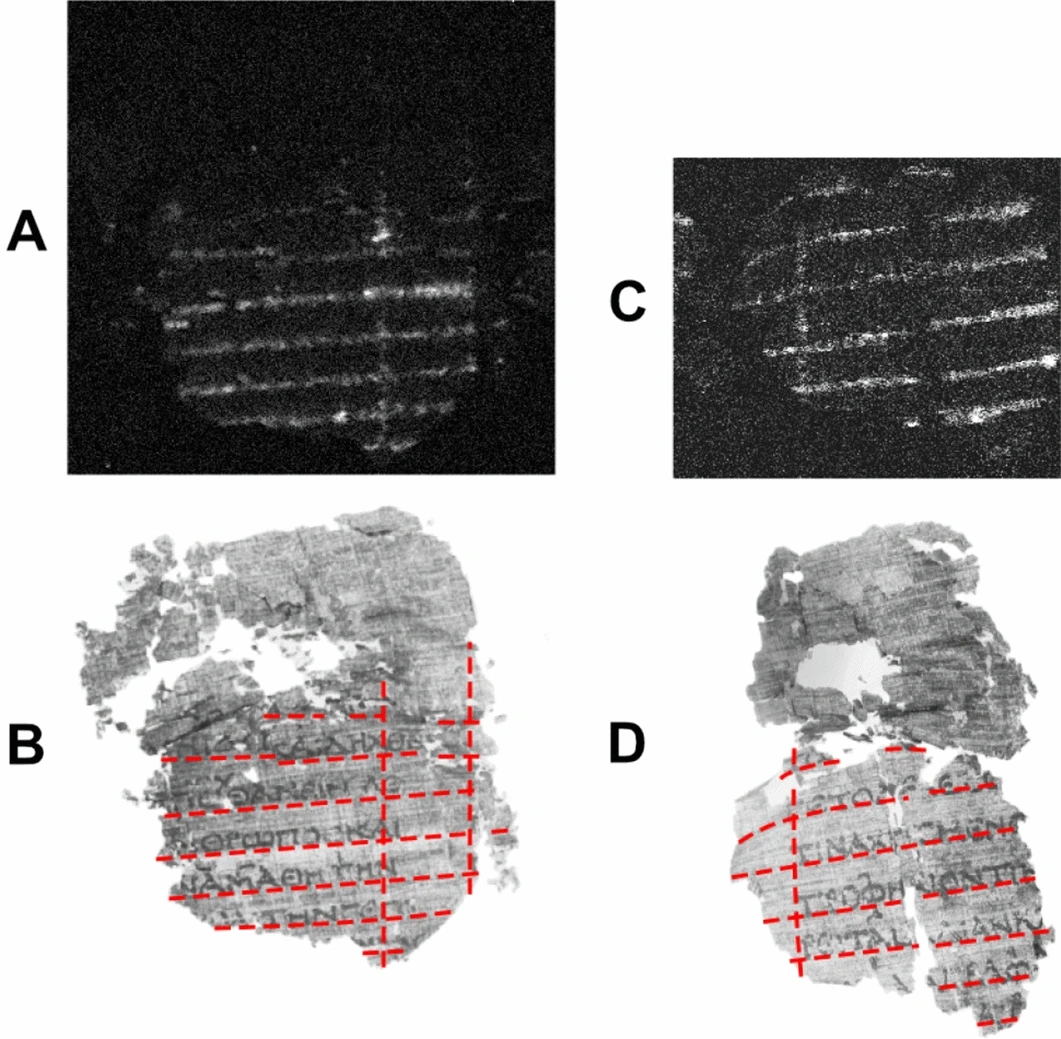In their recently published article, F. P. Romano and co-authors present the first experimental evidence that confirms the application of lead to delimitate the written areas and the corresponding unwritten intercolumns through in situ MA-XRF imaging.
Their research included the analysis of representative samples of unrolled Herculaneum papyri of various qualities, with dates spanning from the 2nd c. BCE to the beginning of the 1st c. CE, and the analysed samples mostly derive from Rome and Campania, while Eastern Mediterranean centres are also represented.

The results, illustrated by MA-XRF lead (Pb) maps (Figure 1), confirm the use of lead to mark written areas and their corresponding intercolumns.
The use of rulers and rounded leaden tools (disks) for the preparation of the papyrus rolls to delimitate the areas intended to be written or to remain blank, was so far only suggested in Roman textual sources (including Phanias, Palatine Anthology 6. 265; Catullus, carm. 22; Philip of Thessalonika, Palatine Anthology 6.62; Pliny the Elder, NH 33.60).
Interestingly, the MA-XRF maps revealed three distinct layout patterns of increasing complexity among the analysed rolls. The complexity of the ruling-lines is directly linked to the quality of the book, with the most complex, delimitating columns, intercolumns, and lines (see Figure 1), associated with the rolls of highest quality.
Finally, the inclination of the pre-defined lead-drawn parallel lines towards the left, confirms that the slanting feature of the columns was deliberate (Maas’ Law).
Did the use of leaden tools expand to early codex production?
Since lead-drawn ruling lines seem to be invisible to the naked eye, only such systematic interdisciplinary research can potentially answer such questions regarding early codex-making.
